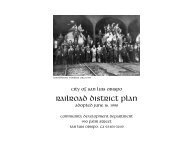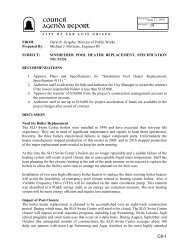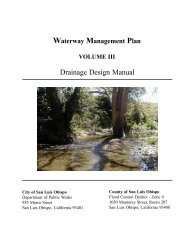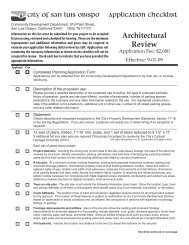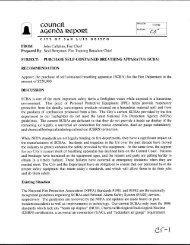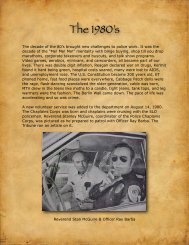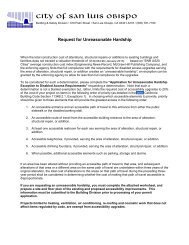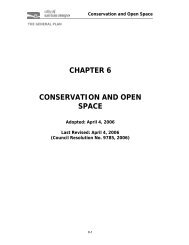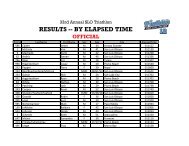Technical Appendix Specifications for the RADIO SYSTEM UPGRADE
Technical Appendix Specifications for the RADIO SYSTEM UPGRADE
Technical Appendix Specifications for the RADIO SYSTEM UPGRADE
Create successful ePaper yourself
Turn your PDF publications into a flip-book with our unique Google optimized e-Paper software.
B. The Contractor shall per<strong>for</strong>m a sample installation of mobile equipment on one each of <strong>the</strong>various types of vehicles. The sample installations shall be modified as necessary and preapprovedby <strong>the</strong> City be<strong>for</strong>e additional mobile equipment is installed.C. Both positive and negative high-current power cables shall be run in parallel directly to <strong>the</strong>vehicle battery to ensure a noise-free installation. The contractor may take exception to adirect battery route only if it can be shown that alternator or ignition noise would not result inreceived or transmitted signals.D. Radio should power down when vehicle ignition is off, except <strong>for</strong> police vehicles. Thus, aseparate ignition sense lead must be provided on <strong>the</strong> radio, or external connection must beequipped with power relays.E. Installation of mobile equipment shall minimize <strong>the</strong> exposure to and possibility of damagedue to abuse, vandalism, and <strong>the</strong>ft. Theft-resistant fasteners and mountings shall be usedwhen necessary. Cables shall be run in hidden and protected spaces to <strong>the</strong> degree possible.F. New microphone holders in vehicles shall be located in a position convenient to <strong>the</strong> driver;exact locations shall be coordinated with <strong>the</strong> City <strong>for</strong> each type of vehicle.G. Mobile installations shall not interfere with <strong>the</strong> vehicle’s air bag systems and appropriatesolutions <strong>for</strong> installing equipment in very limited physical space shall be part of <strong>the</strong>installation. Installations shall not interfere with <strong>the</strong> vehicle’s instruments or controls.H. When applicable, mobile installations shall require <strong>the</strong> complete removal of existing units.I. The contractor shall note that <strong>the</strong> mobile installations may also necessitate temporary removalor relocation of o<strong>the</strong>r existing vehicle radios and controls such as electronic sirens, etc.J. All cables associated with <strong>the</strong> installations shall be protected by rubber grommets whenrouted through vehicle chassis per<strong>for</strong>ations.Control StationsA. The contractor is fully responsible <strong>for</strong> installing <strong>the</strong> radio transceivers, including furnishingand installing cables linking <strong>the</strong> control stations with <strong>the</strong> remotes.B. The City shall approve unit placement, antenna mounting locations.C. The City shall approve all interior and exterior antenna feedline routes. All exterior antennafeedline connection points shall be sealed with wea<strong>the</strong>rproofing compound.D. All exterior antenna feedline runs shall not be hung or supported by nylon or o<strong>the</strong>r plastictype cable ties unless UV rated.E. All exterior mounting hardware shall be stainless steel or galvanized.Antennas and Transmission LinesA. Easiax cable cutting tool, Andrews Model 222951, shall be used to terminate all cables. Forreplacement blades, use Andrews Model 222954 blade kit (5 per kit).B. Antenna transmission lines shall be labeled with cable identification tags indoors at eachconnector. Labels shall denote <strong>the</strong> antenna model, frequency, height, azimuth and VSWR atinstallation. Labels shall be permanent and not hand written.C. The manufacturers’ minimum bending radius shall not be exceeded during installation.City of San Luis Obispo 78 Radio System Upgrade TECHNICAL APPENDIX




